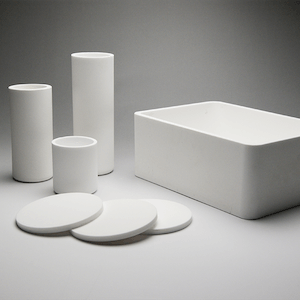One of the most exciting developments in the industrial ceramic manufacturing industry is the rise of additive manufacturing, also known as 3D printing.
Traditional ceramic manufacturing processes involve shaping the material into the desired form using methods like molding, pressing, or extrusion. These processes are limited in terms of the shapes and geometries that can be produced, and they can be time-consuming and expensive.
With 3D printing, however, ceramics can be created with a high degree of precision and complexity. The process involves using a digital model of the desired ceramic object to guide a printer that deposits layers of ceramic material, building up the final product one layer at a time. This method allows for the creation of intricate and customized designs that would be difficult or impossible to produce with traditional methods.
Another advantage of 3D printing in ceramic manufacturing is the ability to use a wider range of materials. While traditional methods typically use only a few specific types of ceramics, 3D printing can work with a much broader range of materials, including composites and even metals.
As with any emerging technology, there are still some challenges to be overcome. One of the main hurdles is the need to develop suitable ceramic powders that can be used in the printing process. In addition, the process can be slow, making it less suitable for large-scale production.
Despite these challenges, however, 3D printing is poised to revolutionize the industrial ceramic manufacturing industry. As the technology continues to improve and evolve, we can expect to see more and more innovative uses of 3D printed ceramics in a wide range of applications.

